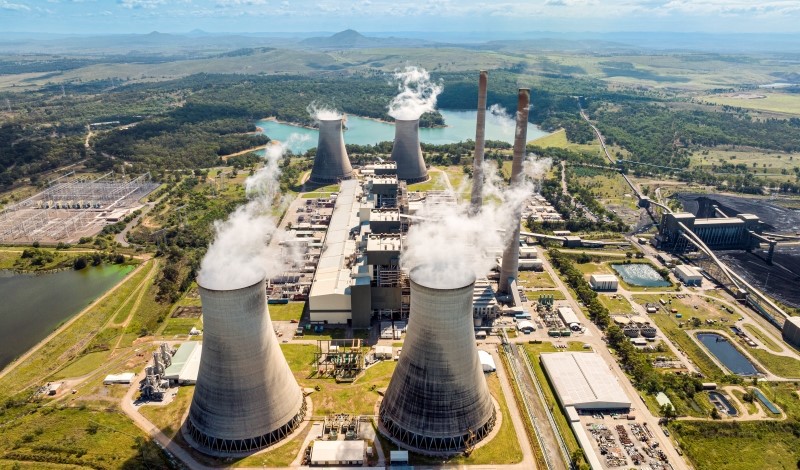
Scholars urge banks and regulators to adapt financial risk models to respond to climate change.
Climate change presents many challenges across the economy, including increased payout risk for insurers, heightened borrowing costs for vulnerable communities, and massive agricultural losses from drought.
Banks can be exposed to these risks by lending to businesses and investing in assets across different industries and geographies. Stress tests are simulation exercises through which bank management and financial regulators assess how banks are likely to fare when faced with serious risks.
In a recent report, Viral V. Acharya, a professor at the New York University Stern School of Business, and several coauthors discuss how a stress test design that considers climate risk can help assess climate change’s impact on financial stability.
Under Federal Reserve System regulations and the Dodd-Frank Act, large banks must regularly conduct stress tests and report the results of such tests. The Federal Reserve uses this data to set the stress capital buffer requirement, which is designed to ensure that banks hold enough assets to cushion against a downturn.
Although the Federal Reserve has not yet signaled an intention to consider climate risk when developing stress test regulations, the European Central Bank has committed to consider climate change in its financial affairs.
Acharya and his coauthors explore how regulators can adapt the design and implementation of stress tests to incorporate climate risk.
Typically, regulators and bank managers design stress test scenarios by choosing a combination of economic and financial calamities that are known to challenge the resilience of individual banks and the broader financial system. For example, the Federal Reserve uses a “severely adverse scenario” featuring a large hike in unemployment accompanied by a collapse in residential and commercial real estate prices.
But climate change presents a different set of risks.
The Acharya team divides these risks into two types: physical risks and transition risks. Physical risks are related to the direct effects of climate change, such as floods and wildfires. Transition risks are associated with the technological and policy changes governments adopt to shift to a cleaner economy, such as electric vehicle adoption or carbon taxes.
These risks, which are still somewhat speculative and unknown, present difficulties in designing realistic stress test scenarios.
For instance, Acharya and his coauthors describe how aggressive policy changes aimed at preventing disasters will translate to an increase in short-term transition risks but might lead to a decline in long-run physical risks.
To balance short-term and long-run risks, the authors suggest that policymakers consider a variety of risk combinations across a portfolio of different scenarios. The De Nederlandsche Bank, for example, presents one scenario with a technological breakthrough paving the way for more renewable energy, another with a global increase in carbon emissions prices due to public policy measures, and a third with a combination of those scenarios.
Acharya and his coauthors suggest that banks use climate-informed stress test scenarios to model how different climate risks could impact them, and banks can better confront those risks by using stress tests that incorporate climate change.
Consider wildfires. The property damage from wildfires, Acharya and his coauthors explain, might imperil homeowners’ ability to pay their mortgages. A stress test model informed by climate risk would therefore show an increase in credit risk for the bank that holds these mortgages. Homes near the wildfires might also decline in value. This decline would hurt local property tax revenues, which could make it harder for cities and towns to pay off their debts, thus increasing the default risk of the municipal bonds that banks hold. A normal stress test might not be granular enough to identify these specific risks, but a climate-targeted stress test would be.
Climate change can also increase liquidity risk for banks. Depositors often withdraw funds to pay for immediate needs after a natural disaster. As natural disasters increase in frequency, a climate stress test could predict that the bank may struggle to meet its regulatory capital requirements. If a bank’s deposits are concentrated in a particular geographic area—which is often the case—the outcome of the stress test could be even more grave. Knowledge of these risks would encourage banks to geographically diversify.
Finally, if carbon taxes and other transition policies curb growth in carbon-heavy industries, climate-informed stress tests would warn banks with exposure to depositors in these industries that they should account for future liquidity difficulties.
Acharya and his coauthors suggest that U.S. regulators should contribute to research on the climate risks that banks face. Policymakers should invest in developing better ways of estimating the relationships between different risks, which will improve stress test scenarios, Acharya and his coauthors argue.
Some central banks outside of the United States have begun doing this. The Australian Prudential Regulation Authority and the Bank of Canada have adopted and modified scenarios and predictions from the Network for Greening the Financial System, a consortium of central banks and supervisors.
Climate change presents new risks to many individuals and businesses across the economy. Through deposits, loans, and investments, large banks could find themselves exposed to a combination of risks in the future. By incorporating climate risk into their stress test exercises, regulators and banks will be better equipped to understand emerging threats to financial stability, Acharya and his coauthors conclude.



